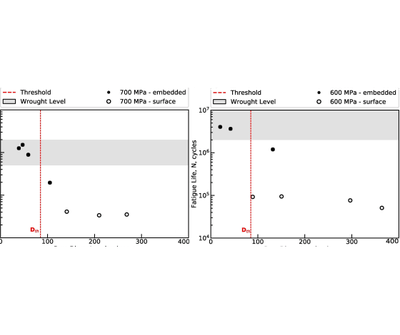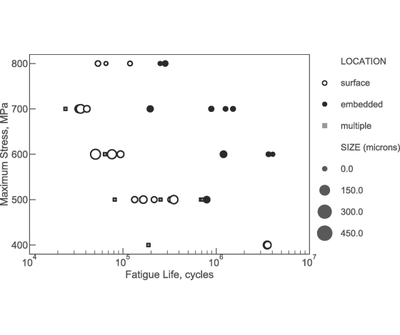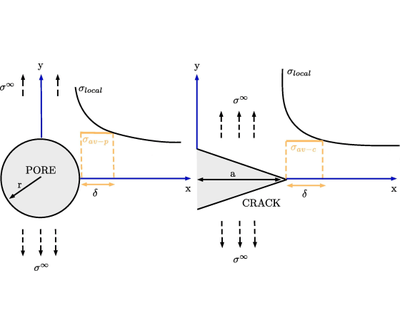


Ti-6Al-4V with intentionally introduced porosity defects
In this work, we have studied the source of dispersion and the influence of pore size on fatigue life using samples from the standard processing route and samples with intentionally introduced porosity defects. According to the fracture surface study, contrary to the common belief, the source of dispersion is primarily the pore location, e.g. surface or embedded pore, rather than the pore size. In the case of embedded pores as the failure source, a threshold pore size of approximately 85 μm was observed, below which the wrought level fatigue performance was achieved. For surface pores above the threshold size, fatigue life was reduced by two orders of magnitude, but remained unchanged, even though crack initiating pore size increased roughly by a factor of four. This experimental observation was supported by local elastic stress analysis, which indicated that pores above a certain size could behave like micro-notches suggesting the popular Kitagawa-Takahashi diagrams should be presented with a horizontal asymptote for this alloy.
E. Akgun, X. Zhang, R. Biswal, Y. Zhang, and M. Doré, “Fatigue of wire+arc additive manufactured Ti-6Al-4V in presence of process-induced porosity defects,” International Journal of Fatigue, vol. 150, Sep. 2021,
doi: 10.1016/j.ijfatigue.2021.106315.
Information
- Research Area:Material Performance
-
Investigators:
Xiang Zhang
, Romali Biswal - Publications:https://doi.org/10.1016/j.ijfatigue.2021.106315
